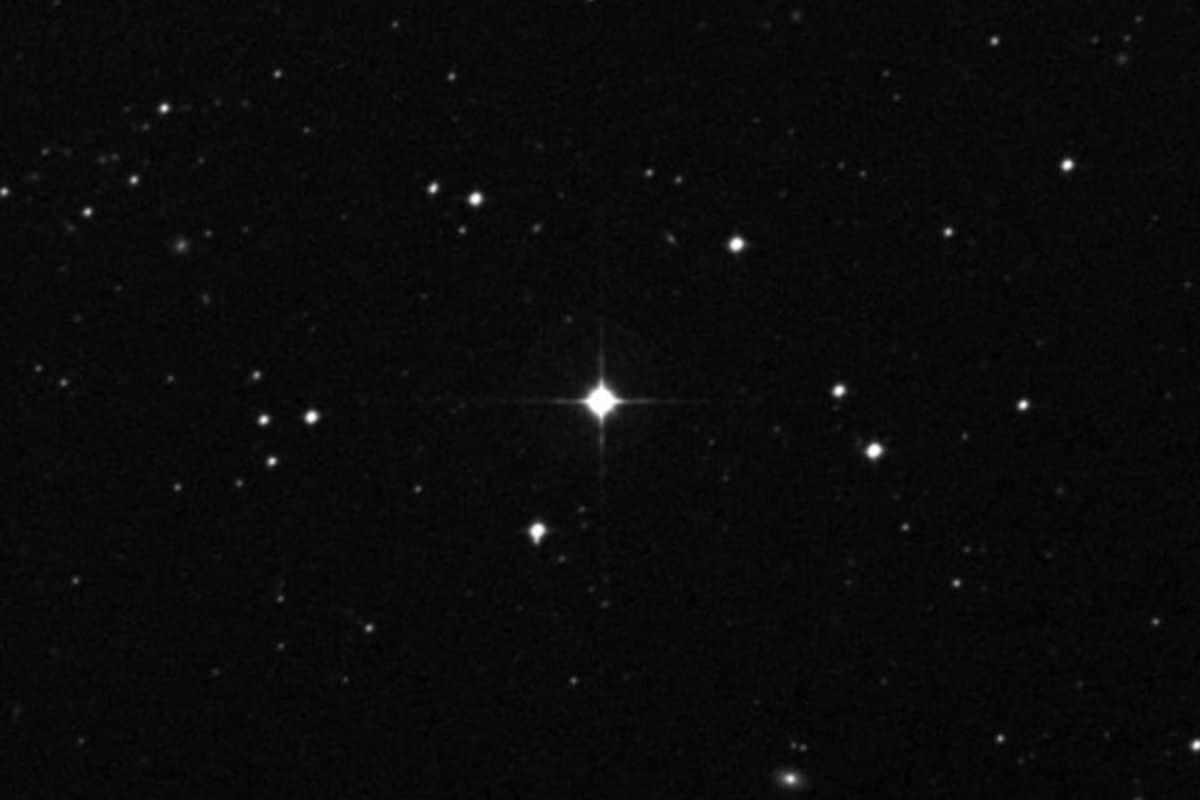

Astronomers have seen as many as 65 different chemical elements in one star. Only in our sun (slightly) more elements have been identified.
How do the elements that make up everything around us come into existence? For the heavier types of atoms, we have to rely on violent events in the universe: colliding neutron stars or massive stars that explode as supernovas. To better understand this process, astronomer Ian Roederer (University of Michigan) and colleagues identified as many elements as possible in the star HD 222925.
Among other things, this star in the constellation Toucan appears to contain a number of metals that always make the hearts of us earthlings beat faster: silver, gold and platinum. But the elements tungsten, molybdenum, osmium and iridium, to name just four, are also part of the star.
barcode
So we’ve come a long way since Auguste Compte wrote in 1935: “We will never find a way to determine the chemical composition of stars.” This French philosopher was quite wrong, because earlier that century a phenomenon had already been discovered that could indeed tell us what distant celestial bodies are made of: spectral lines.
Certain colors appeared to be ‘missing’ in the sunlight, noted the German physicist Joseph von Fraunhofer. And, as others discovered a few decades later, those black lines are associated with chemical elements. Each element appears to absorb different colors of light – or rather, different wavelengths – thus betraying its presence by leaving a sort of barcode in the light of the sun, or of a distant star.
absorb neutrons
Since then, astronomers have made grateful use of this phenomenon – including Roederer and his team. They studied ultraviolet light (light with a shorter wavelength than human eyes can see) from the star HD 222925, collected with the Hubble Space Telescope. And based on the spectral lines in that light, they were able to identify as many as 65 elements. “To my knowledge, that’s a record for an object outside our solar system,” Roederer said in a statement press release†
These astronomers mainly focused on the elements heavier than zinc. This is because, we think, through the so-called rapid neutron capture processin short it r-process† In doing so, a relatively light element such as iron absorbs neutrons, turning it into a heavier element. And that must have happened with many of the elements Roederer and colleagues found in HD 222925.
‘Important article’
The only problem is that trapping neutrons doesn’t just happen everywhere. As far as we know, that would require a collision between two neutron stars, or a supernova explosion. The idea is therefore that the observed elements did not arise in the star under study, but during a previous collision or explosion. Then they ended up in interstellar space. New stars were later formed from these, including HD 222925, which therefore contained a stock of heavy elements from the start.
“The researchers suggest that their measurements could aid further theoretical studies of how such elements form,” says emeritus professor of astronomy John Cowani from the University of Oklahoma, not involved in the study. “I think this will be an important paper for astrophysics.”
Match high score
And can the number of observed elements in this star be increased even further? With regard to the elements fluorine, chlorine, argon, bromine, krypton, xenon, cesium and thallium, the situation is quite hopeless, the scientists write. They do not have spectral lines in the visible and ultraviolet light that can be seen well enough.
However, for iodine and mercury, Roederer and his team still see possibilities. If they were indeed able to see those two elements, they would equal the top score of our own sun – 67 elements. And no, that’s not what these astronomers are about. But it would still be a fine example, for a star nearly 1,500 light-years away that is not even visible to the naked eye.
Source material:
†The R-Process Alliance: A Nearly Complete R-Process Abundance Template Derived from Ultraviolet Spectroscopy of the R-Process-Enhanced Metal-Poor Star HD 222925– ArXiv.org, Coming Soon in The Astrophysical Journal Supplement Series
†Astronomers Find a Star That Contains 65 Different Elements” – Universe Today
†Astronomers find ‘gold standard’ star in Milky Way” – University of Michigan
John Cowan (University of Oklahoma) Image at the top of this article: The STScI Digitized Sky Survey